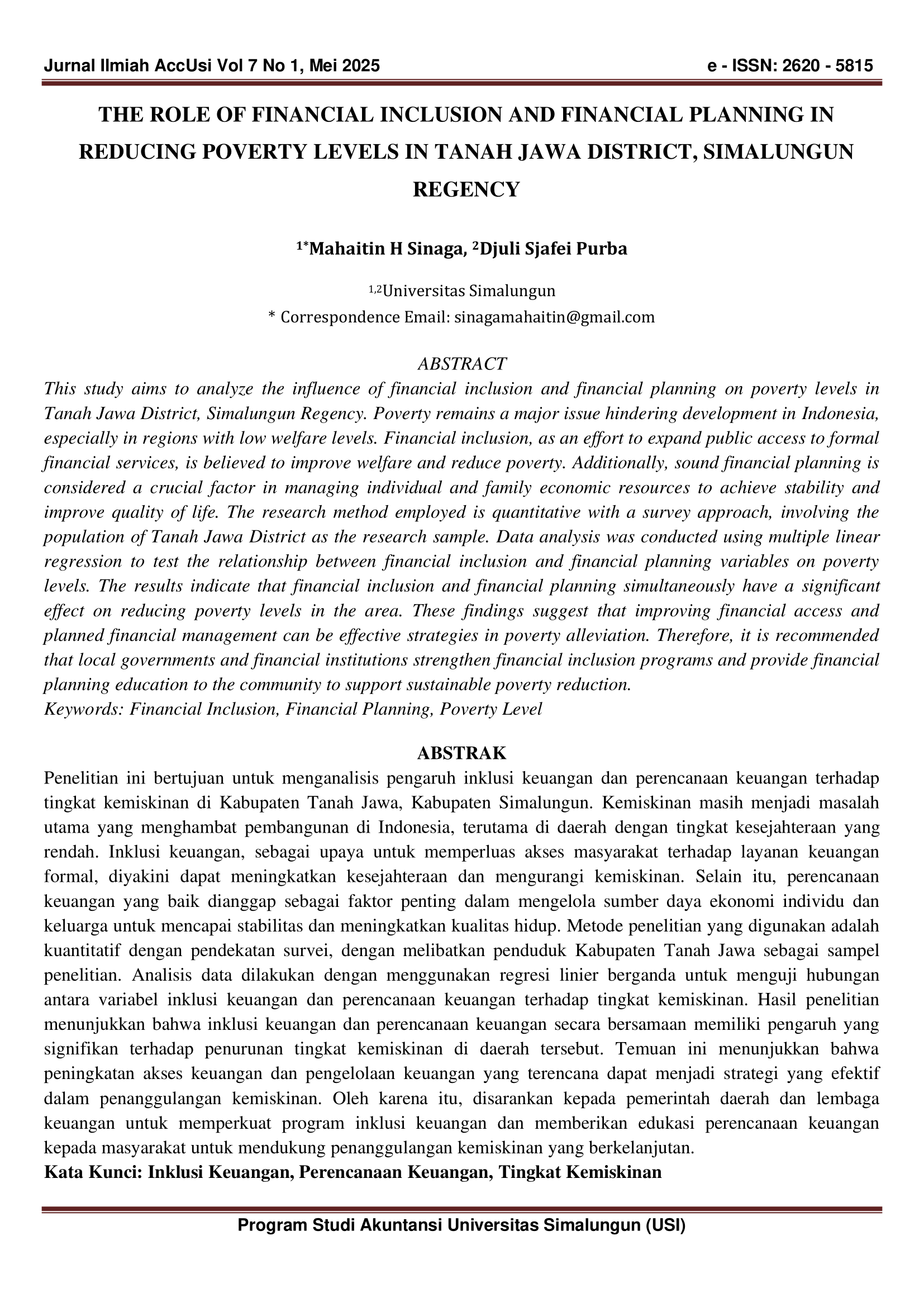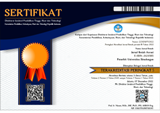The Role Of Financial Inclusion And Financial Planning In Reducing Poverty Levels In Tanah Jawa District, Simalungun Regency
DOI:
https://doi.org/10.36985/dfa51s47Keywords:
Financial Inclusion, Financial Planning, Poverty LevelAbstract
This study aims to analyze the influence of financial inclusion and financial planning on poverty levels in Tanah Jawa District, Simalungun Regency. Poverty remains a major issue hindering development in Indonesia, especially in regions with low welfare levels. Financial inclusion, as an effort to expand public access to formal financial services, is believed to improve welfare and reduce poverty. Additionally, sound financial planning is considered a crucial factor in managing individual and family economic resources to achieve stability and improve quality of life. The research method employed is quantitative with a survey approach, involving the population of Tanah Jawa District as the research sample. Data analysis was conducted using multiple linear regression to test the relationship between financial inclusion and financial planning variables on poverty levels. The results indicate that financial inclusion and financial planning simultaneously have a significant effect on reducing poverty levels in the area. These findings suggest that improving financial access and planned financial management can be effective strategies in poverty alleviation. Therefore, it is recommended that local governments and financial institutions strengthen financial inclusion programs and provide financial planning education to the community to support sustainable poverty reduction.
Downloads

Downloads
Published
Issue
Section
License
Copyright (c) 2025 Mahaitin H Sinaga, Djuli Sjafei Purba (Author)

This work is licensed under a Creative Commons Attribution 4.0 International License.









